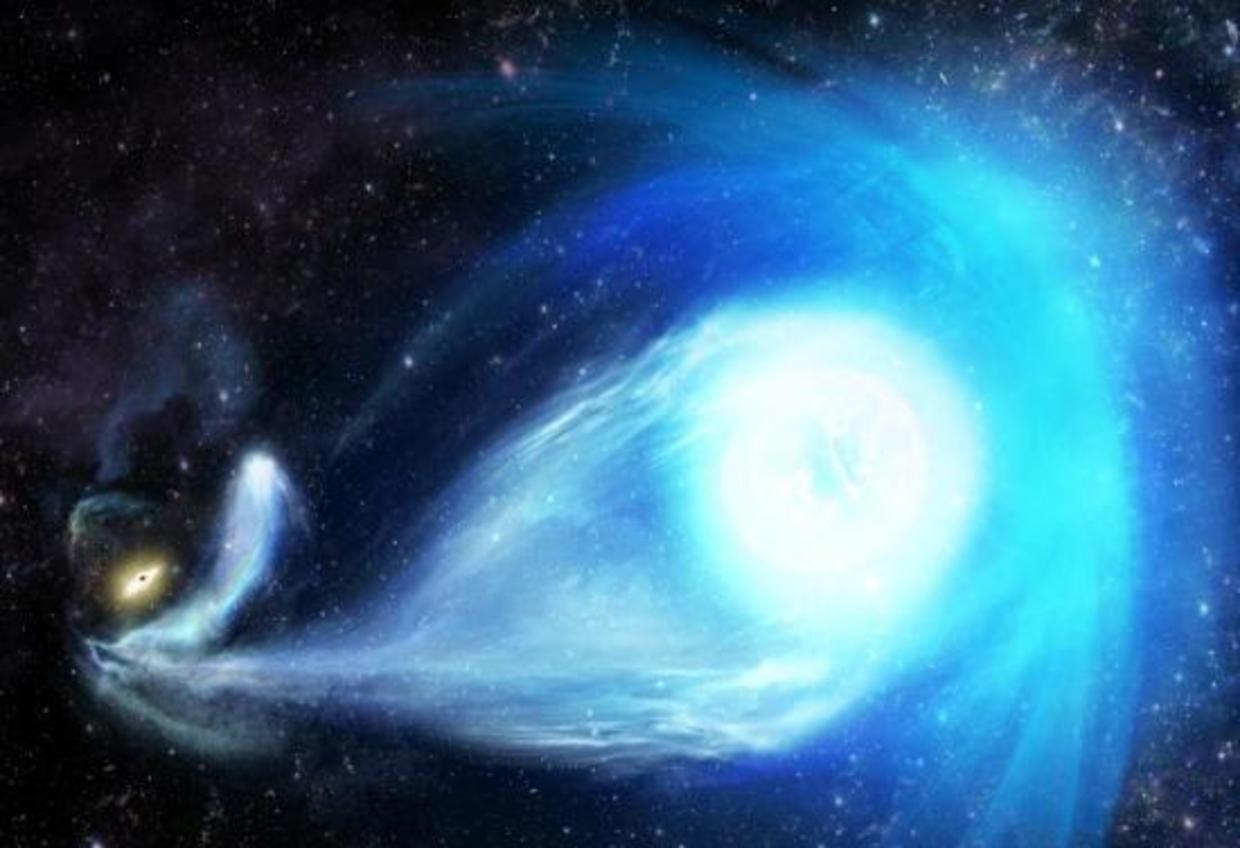black hole throws star out of Milky Way galaxy
Jan 2, 2020 12:02:35 GMT -5
mohs, RWA3006, and 4 more like this
Post by 1dave on Jan 2, 2020 12:02:35 GMT -5

hypervelocitystar2-1-550x376.jpg
An artist's interpretation of Sagittarius A* ejecting a star called S5-HVS1 from the galaxy's center. Carnegie Science
www.cbsnews.com/news/black-hole-supermassive-black-hole-throws-star-out-of-milky-way-galaxy-3point7-million-mph-today/
Supermassive black hole throws star out of Milky Way galaxy at speed of 3.7 million mph
By Sophie Lewis
November 14, 2019 / 11:21 PM / CBS News
Five million years ago, when humanity's ancestors were just learning to walk upright, a star was ejected from Sagittarius A*, the supermassive black hole at the center of the Milky Way Galaxy, at a staggering 3.7 million mph. This month, a group of researchers spotted the super fast star traveling relatively close to Earth.
Researchers, led by Sergey Koposov of Carnegie Mellon University's McWilliams Center for Cosmology as part of the Southern Stellar Stream Spectroscopic Survey (S5), spotted the star — known as S5-HVS1 — in the constellation Grus. According to a press release Tuesday, the star was traveling at just 29,000 light-years away from Earth, or "practically next door by astronomical standards."
Researchers said the "runaway" star was traveling at speeds about 10 times faster than most other stars in the galaxy. "The velocity of the discovered star is so high that it will inevitably leave the [Milky Way] and never return," said co-author Douglas Boubert of the University of Oxford.
"This is super exciting, as we have long suspected that black holes can eject stars with very high velocities," Koposov said. "However, we never had an unambiguous association of such a fast star with the Galactic Center."
Trending News
"City killer" asteroid misses Earth — and scientists had no idea
NASA astronaut Christina Koch sets a new record in space
Massive black hole that "should not even exist" discovered
NASA astronaut Christina Koch sets a new record in space
Massive black hole that "should not even exist" discovered
Astronomer Jack Hills first proposed that black holes can eject super fast stars at high velocities. But S5-HVS1 is the first time scientists have actually witnessed Hills Mechanism in action.
The discovery was made using the 12.8-foot Anglo-Australian Telescope and observations from the European Space Agency's Gaia satellite. The relative closeness of the star allowed for an "unprecedented" opportunity to learn about the phenomena.
Hypervelocity star by Carnegie Science on YouTube
"Seeing this star is really amazing", Carnegie's Ting Li said. "As we know it must have formed in the Galactic Center, a place very different to our local environment. It is a visitor from a strange land."
Koposov and his team are now able to track the star's journey back to the center of the galaxy. They hypothesize that S5-HVS1 used to live with a companion star, but when the two drifted too close to Sagittarius A*, its companion was captured, while it was thrown back out.
"My favorite part of this discovery is thinking about where this star came from and where it's going," said Carnegie's Alex Ji. "It was born in one of the craziest places in the universe, near a supermassive black hole with lots of other nearby star friends; but it's going to leave our galaxy and die all alone, out in the middle of nowhere. Quite a fall from grace."














